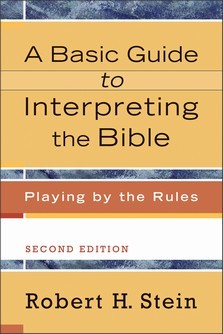The interpretation of biblical texts often involves understanding the context in which they were written. One approach, sometimes referred to as “mirror reading,” suggests that biblical texts are primarily reactions against specific assumptions, beliefs, or presuppositions prevalent at the time. This perspective argues that to accurately interpret any biblical passage, one must first identify what the text is reacting against within its historical context. However, the application of mirror reading has faced scrutiny from various scholars. This article delves into the concept of mirror reading and presents perspectives from New Testament scholars who offer cautionary notes on its use.
The Pitfalls of Mirror Reading: Perspectives from Scholars
Several New Testament scholars have voiced concerns regarding the potential misapplication of mirror reading. They emphasize the importance of careful and nuanced interpretation, warning against the dangers of over-reliance on reconstructing the historical context at the expense of the text itself.
1. Robert H. Stein
Robert H. Stein in his book, A Basic Guide to Interpreting the Bible: Playing by the Rules, addresses the potential dangers of mirror reading the Epistles. He acknowledges that the occasional nature of the Epistles helps readers reconstruct the situations they addressed. For example, reading Galatians provides a good understanding of the Galatian problem, and reading 1 Corinthians reveals troubles in the Corinthian church.
However, Stein cautions against interpreting every command, prohibition, or teaching in an epistle as a direct reflection of a particular situation within the church. He argues that such a “mirror reading” approach is often unwarranted. Not every directive needs to reflect a present problem; they may serve as prophylactic or preventative measures, reflecting common issues encountered elsewhere.
Stein provides indicators that might legitimize a mirror reading, such as:
- References to specific problems within the church (e.g., 1 Cor. 1:10–17; 5:1–5; 6:1–10).
- Specific questions asked by the recipients of the letter (e.g., 1 Cor. 7:1–24, 25–40; 8:1–13; 16:1–4).
- Unusual emphasis on certain issues (e.g., 1 Cor. 1:18–3:23; Gal. 1:11–2:21; 3:1–5:1).
He emphasizes that understanding the situation the NT writers addressed involves hypothetical reconstruction and isn’t the same as understanding their communicative intention. The latter is found in the text and should be the primary goal of study.
2. Clint Arnold
Clint Arnold defines “mirror reading” as interpreting a NT letter under the assumption that most of what is said reflects a problem or situation confronting the church. He warns against overdoing this approach. For instance, assuming that Paul’s admonishment to the Colossians to rid themselves of “anger, wrath, malice, and slander” indicates these were significant problems in the Colossian church could be a misinterpretation. Some instructions might address universal human problems stemming from sin.
However, Arnold clarifies that examining explicit features of a heresy in light of the religious and cultural environment is not “mirror reading.” He gives the example of Paul’s warning against those who “disqualify you, insisting on asceticism and worship of angels, going on in detail about visions” (Col 2:18). This specific indicator calls for historical examination to discern what the church was facing.
Arnold believes that positive teaching in the letter contributes to understanding the problem because Paul wrote as a caring pastor expressing theology relevant to their specific needs. He notes that the theology of the letter remains true regardless of the reconstruction of the heresy. For example, the truth that “He has delivered us from the domain of darkness and transferred us to the kingdom of his beloved Son” (Col 1:13) stands regardless of whether the Colossian philosophy is seen as mystical Judaism, Gnosticism, or local folk belief. Understanding the nature of false teaching, however, may impact the interpretation of this statement for ministry.
3. Douglas J. Moo
Douglas J. Moo, in his commentary on 2 Peter, Jude, discusses the challenges of interpreting passages where the historical context is unclear. He reflects on 2 Peter 2:10b–12, noting that we do not know how the false teachers were “blaspheming” evil angels. He suggests that any conclusions we reach must be tentative.
Moo notes two possible approaches when faced with these gaps. Some scholars attempt to fill the gaps by creating theories about the background situation. While acknowledging the value of background study, he cautions against building elaborate theories on slim and uncertain evidence. He identifies this process as “mirror-reading,” where a specific background theory shapes the interpretation of the text.
Moo provides the example of interpretations of 1 Timothy 2:11–15, where Paul states that he does not want women “to teach or to have authority over a man.” Many interpretations assume this prohibition must be interpreted in its first-century context. However, they often suggest specific background scenarios with little basis in the text or what we know of the first-century world. Moo argues that scholars using this “mirror-reading” approach may conclude that Paul’s advice is not directly relevant for the church today because of these theoretical background scenarios.
Moo concludes that while background study is necessary and often relevant, we must be certain of the influence of a given background situation before making it decisive in our interpretation. Otherwise, we risk manipulating texts to say what we want them to say or dismissing passages of Scripture as inapplicable.
Conclusion
While understanding the historical context of biblical texts is crucial, the approach of “mirror reading” requires careful application. Over-reliance on reconstructing historical situations can lead to misinterpretations and a neglect of the text’s primary message. The insights from Stein, Arnold, and Moo offer valuable guidance in navigating the complexities of biblical interpretation, urging scholars and readers alike to prioritize the communicative intention of the authors while remaining mindful of the potential pitfalls of speculative reconstruction.
